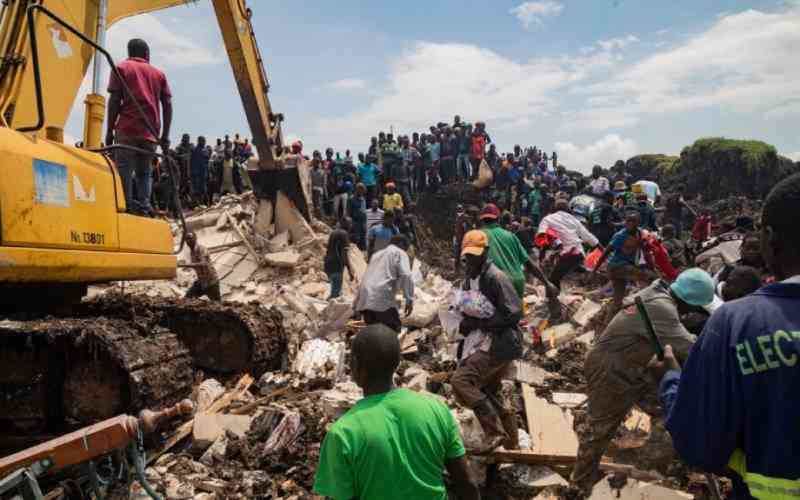St. Anselm Roman Catholic Church in New York’s Brooklyn borough is used to limping along, month after month, at a budget deficit of several thousand dollars a week.
But the church that sits in the city that is the epicentre of the US coronavirus pandemic could always count on Easter.
Last year, its Easter pew collection brought in $11,651 (Sh1,234,702). That was more than twice an average Sunday and, coupled with the church’s online Easter donations of $2,500 (Sh264934), enough to cover its weekly operating expenses, according to church records.
Health crisis
Like most churches around the US, St. Anselm’s was closed on Sunday, its members unable to gather and its priests unable to meet with them as the nation endures its worst public-health crisis in a century.
But just as American churches have been unable to meet their members’ spiritual needs — perhaps most painfully represented in the absence of public funerals for the thousands who have died — they also have faced their own unmet needs in the form of untouched collection baskets.
“We are in uncharted waters, financially,” said John Quaglione, a St. Anselm’s parishioner who is also a spokesman for the Roman Catholic Diocese of Brooklyn. “There will be some serious conversations and some strong conversations with the parishes and the economic folks to help get us through this.”
Biggest donation
Easter Sunday is one of the biggest donation days of the year for US churches, due largely to the spikes in attendance they typically see, according to church officials and non-profit groups.
Even before health guidance shuttered most US churches, many were struggling financially. Just half of Americans reported belonging to a church, synagogue or mosque in 2018, according to Gallup polling, down from 70 per cent two decades earlier. Those who attend services go more erratically, according to the Pew Research Centre, leaving fewer people to fill collection baskets.
The high cost of maintaining older church buildings and — particularly for the Catholic church, legal costs related to the clergy sex abuse scandal — have also taken a toll on churches in the US and around the world.
“This is the first time where we have this almost national shutdown of churches,” said John Berardino, president of Fredericksburg, Virginia-based Griffin Capital Funding, which specialises in church real estate loans. He said he believed the extended shutdowns would take a heavy financial toll on about half of US churches.
Scott McConnell, executive director of Nashville, Tennessee-based LifeWay Research, which conducts surveys and research for Christian ministries, sounded a similar note.
“It would not surprise me at all if 5 per cent of churches close over the next year,” McConnell said.
That is five times the typical annual closure rate estimated by The Christian Century, a US mainline Protestant magazine.
Stay informed. Subscribe to our newsletter
Most American churches do not have sizeable endowments. According to LifeWay, 26 per cent of churches have seven weeks or less of operating income. An additional quarter only have enough to last eight to 15 weeks.
The pain of the closures is not just fiscal.
After announcing a sweeping list of cancellations, Bishop Charles Blake of the Church of God in Christ, the largest US Pentecostal denomination, expressed regret at their necessity.
“While the fellowship with one another is priceless, your safety is most important to us,” Blake said, adding, “stay at home.”
Three years ago, the Mount Calvary Pentecostal Church in Youngstown, Ohio, which had been a pillar of its community since its founding in 1918, the year of the Spanish Flu, faced the “perfect storm,” said the church’s bankruptcy attorney, Andrew Suhar.
“Shrinking population, shrinking congregation and shrinking donations,” Suhar said.
The church filed for Chapter 11 bankruptcy protection and began to work with its major lender, the Christian Community Credit Union, to reorganise. In 2018, the church emerged successfully from bankruptcy with a new solvency plan, which was on the way to putting the church’s balance sheet back in order — until Covid-19 emerged.
“They had worked so hard and done such a good job,” said the church’s legal counsel, Matthew Blair. “Now, with Covid-19, there is no church attendance... Revenue is nonexistent.”
Mount Calvary’s pastor declined to be interviewed.
Many churches are turning to their online donation portals for help, but those typically lag what funnels into church coffers from passed donation plates during Sunday services.
Older people
“Many churches are still run by older people... they may not be as technically savvy,” said Berardino, of Griffin.
He noted that religious organisations and lenders had successfully lobbied lawmakers to include church personnel in the list of American workers offered support by the $2.3 trillion coronavirus relief package passed by Congress last month. Churches will also be eligible for the administration’s stimulus package small business loans.
 The Standard Group Plc is a
multi-media organization with investments in media platforms spanning newspaper
print operations, television, radio broadcasting, digital and online services. The
Standard Group is recognized as a leading multi-media house in Kenya with a key
influence in matters of national and international interest.
The Standard Group Plc is a
multi-media organization with investments in media platforms spanning newspaper
print operations, television, radio broadcasting, digital and online services. The
Standard Group is recognized as a leading multi-media house in Kenya with a key
influence in matters of national and international interest.
 The Standard Group Plc is a
multi-media organization with investments in media platforms spanning newspaper
print operations, television, radio broadcasting, digital and online services. The
Standard Group is recognized as a leading multi-media house in Kenya with a key
influence in matters of national and international interest.
The Standard Group Plc is a
multi-media organization with investments in media platforms spanning newspaper
print operations, television, radio broadcasting, digital and online services. The
Standard Group is recognized as a leading multi-media house in Kenya with a key
influence in matters of national and international interest.








